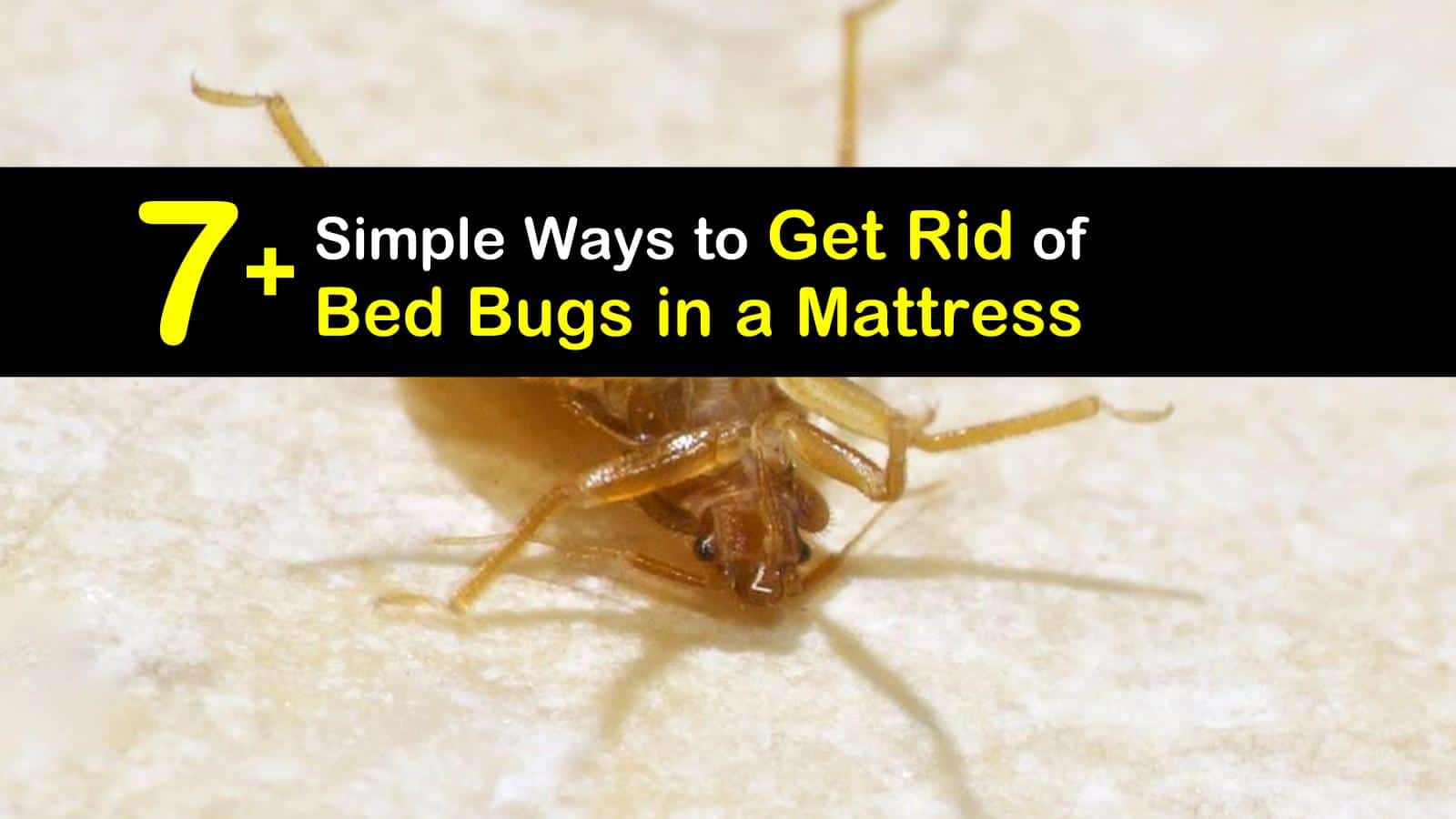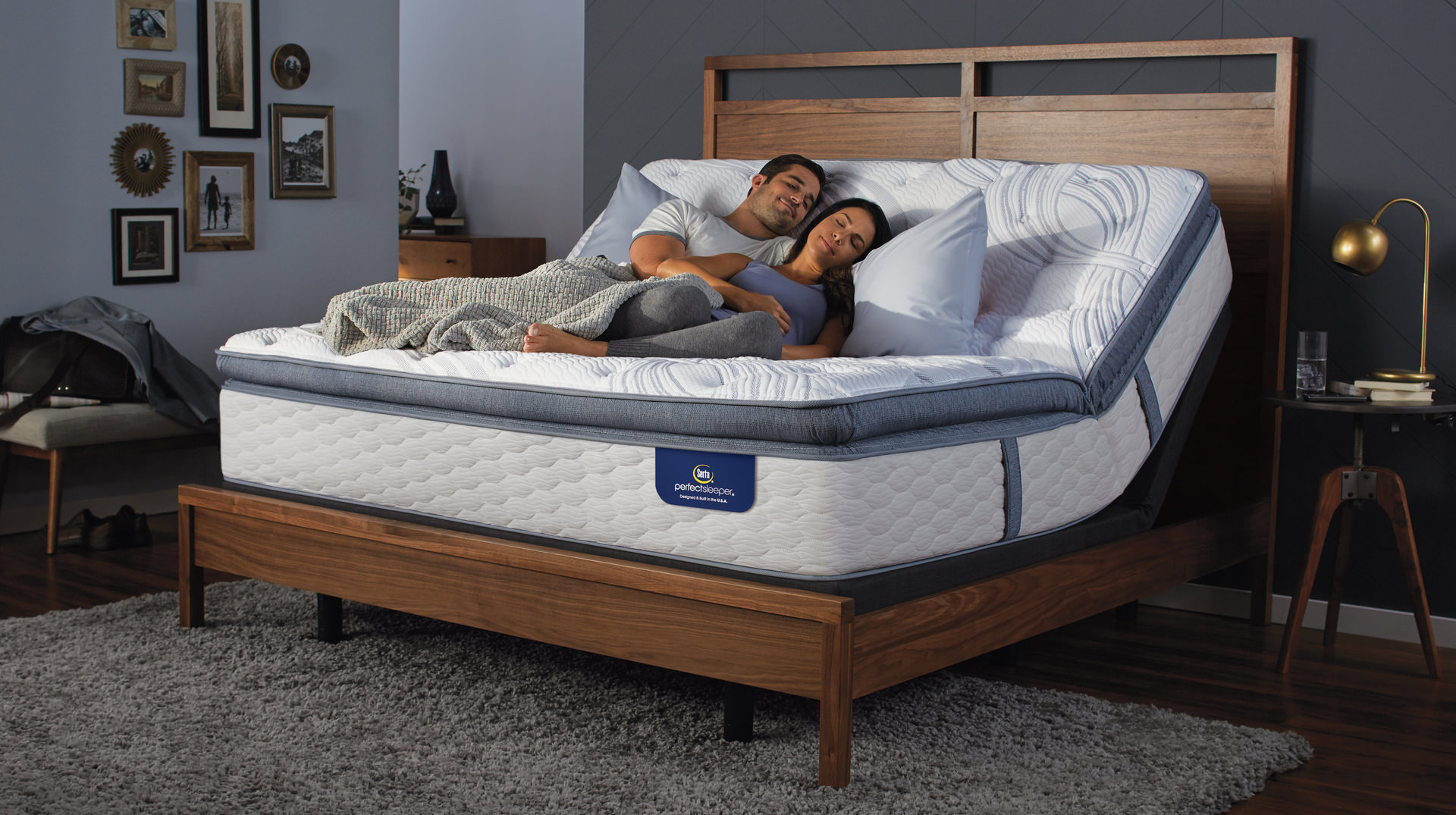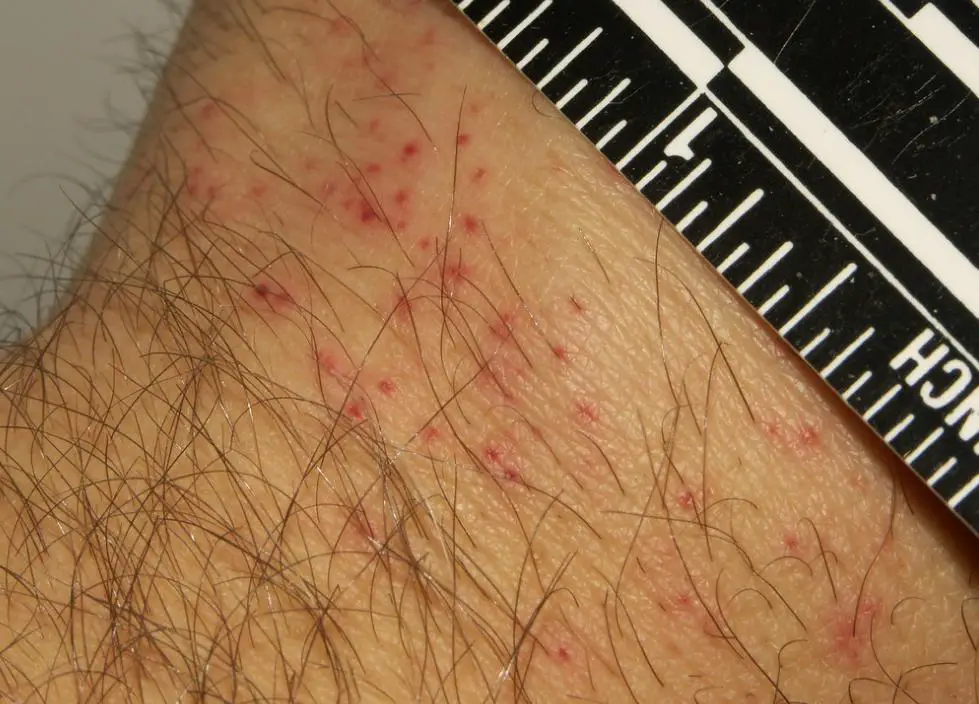1. How to Properly Dispose of a Mattress Infested with Bed Bugs
Dealing with a bed bug infestation can be a stressful and frustrating experience. Not only do you have to worry about getting rid of the bugs themselves, but also the potential damage they can cause to your belongings. One of the most common items that can be affected by bed bugs is your mattress. If you have determined that your mattress is infested with bed bugs and cannot be salvaged, it is important to dispose of it properly in order to prevent further spread of the infestation.
First and foremost, it is important to never attempt to donate or resell a mattress that is infested with bed bugs. Not only is this unethical, but it can also lead to further spread of the infestation to someone else's home. It is also important to avoid simply throwing the mattress on the curb, as this can also lead to the spread of bed bugs to your neighbors.
The best and most responsible way to dispose of a mattress infested with bed bugs is to wrap it in plastic and label it as "infested with bed bugs." This will alert waste management workers to handle the mattress with caution and take proper measures to prevent the spread of the bugs.
2. Steps to Take After Getting Rid of Bed Bugs in Your Mattress
Once you have successfully eliminated the bed bugs from your mattress, it is important to take certain precautions to prevent a re-infestation. One of the first steps you should take is to thoroughly clean and vacuum the area where the mattress was located. Bed bugs can easily hide in cracks and crevices, so be sure to vacuum thoroughly and dispose of the vacuum bag immediately.
You may also want to consider encasing your new mattress in a special bed bug-proof cover. These covers are designed to prevent bed bugs from infesting your mattress and can be an effective preventative measure.
Additionally, it is important to regularly inspect your new mattress and bedding for any signs of bed bugs. Bed bugs can easily hitch a ride on clothing and other items, so be cautious when bringing items into your bedroom.
3. Safe and Effective Ways to Get Rid of a Mattress with Bed Bugs
There are a few different methods you can use to get rid of a mattress infested with bed bugs. One option is to use a steam cleaner to kill the bugs and their eggs. Be sure to thoroughly steam all sides of the mattress and pay extra attention to seams and crevices where bed bugs like to hide.
Another option is to use a pesticide specifically designed for bed bugs. These can be sprayed directly onto the mattress and will kill any bugs on contact. However, it is important to follow the instructions carefully and take precautions to avoid inhaling the chemicals.
If you are uncomfortable using chemicals, you can also try using diatomaceous earth. This natural powder can be sprinkled on the mattress and will dehydrate and kill the bed bugs. Be sure to use food-grade diatomaceous earth for this purpose.
4. What to Do with a Mattress After Bed Bug Treatment
After treating your mattress for bed bugs, it is important to take proper precautions to prevent a re-infestation. If you plan on keeping the mattress, be sure to regularly inspect it for any signs of bed bugs and take immediate action if you notice any. You may also want to consider using a bed bug-proof cover on your mattress to prevent future infestations.
If you have decided to dispose of the mattress, be sure to follow the proper guidelines for your area. In some places, you may be required to label the mattress as "infested with bed bugs" before disposal. It is also important to wrap the mattress in plastic to prevent the bugs from spreading during transport.
Consult your local waste management department for specific instructions on how to dispose of a mattress infested with bed bugs in your area.
5. How to Get Rid of a Mattress Infested with Bed Bugs Without Spreading Them
Bed bugs are notorious for their ability to spread quickly and easily. When disposing of a mattress infested with bed bugs, it is crucial to take precautions to prevent the bugs from spreading to other areas of your home.
First and foremost, do not attempt to move the mattress without properly wrapping it in plastic. This will prevent bed bugs from falling off the mattress and infesting other areas of your home.
It is also important to be cautious when removing the mattress from your home. Avoid dragging it through other rooms and be sure to dispose of the plastic wrapping immediately after removal. It may also be helpful to have a designated pathway for removal to avoid spreading the bugs to other areas.
6. Proper Disposal of a Mattress After Bed Bug Infestation
Proper disposal of a mattress infested with bed bugs is crucial in preventing the further spread of the infestation. Depending on the guidelines in your area, you may be required to label the mattress as "infested with bed bugs" before disposal. This will alert waste management workers to take proper precautions when handling the mattress.
When disposing of the mattress, be sure to wrap it tightly in plastic to prevent the bugs from escaping during transport. You may also want to consider double-bagging the mattress to be extra cautious.
It is important to follow the guidelines and regulations set by your local waste management department to ensure proper and responsible disposal of a mattress infested with bed bugs.
7. Tips for Getting Rid of a Mattress with Bed Bugs
Dealing with a bed bug infestation can be overwhelming, but there are some tips that can make the process of getting rid of a mattress with bed bugs a little easier.
First, be sure to act quickly. The longer you wait, the more time the bed bugs have to multiply and spread to other areas of your home.
It is also important to properly identify the infestation and confirm that it is indeed bed bugs before taking any action. This will ensure that you are using the most effective methods for elimination.
Lastly, do not be afraid to seek professional help. Pest control companies have the expertise and equipment to effectively eliminate bed bugs and can help guide you through the process of proper disposal of a mattress infested with bed bugs.
8. How to Dispose of a Mattress with Bed Bugs in a Responsible Way
When dealing with a mattress infested with bed bugs, it is important to not only eliminate the bugs themselves but also to dispose of the mattress in a responsible way. This means following the guidelines and regulations set by your local waste management department and taking precautions to prevent the spread of the bugs.
Always wrap the mattress tightly in plastic and label it as "infested with bed bugs" before disposal. This will alert waste management workers to handle the mattress with caution and prevent the spread of the bugs to other areas.
It is also important to properly clean and vacuum the area where the mattress was located to prevent a re-infestation.
9. What to Do with a Mattress After Bed Bug Extermination
After successfully eliminating bed bugs from your mattress, it is important to take preventative measures to avoid a future infestation. This includes regularly inspecting your new mattress and bedding for any signs of bed bugs and taking precautions when bringing in new items into your bedroom.
You may also want to consider using a bed bug-proof cover on your mattress for added protection.
If you have decided to dispose of the mattress, be sure to follow the proper guidelines and regulations in your area to ensure responsible disposal.
10. Best Practices for Getting Rid of a Mattress After Bed Bug Treatment
When it comes to getting rid of a mattress infested with bed bugs, there are a few best practices to keep in mind.
First, always wrap the mattress tightly in plastic and label it as "infested with bed bugs" before disposal. This will prevent the spread of the bugs and ensure responsible disposal.
Be sure to also thoroughly clean and vacuum the area where the mattress was located to prevent a re-infestation.
If you are unsure about how to properly dispose of the mattress, consult your local waste management department for specific guidelines and regulations in your area.
Why Proper Disposal of Mattresses is Essential for Getting Rid of Bed Bugs

The Dangers of Keeping an Infested Mattress
 When dealing with a bed bug infestation, it's not just about getting rid of the bugs themselves, but also their habitat. Mattresses are the perfect breeding ground for bed bugs, providing them with warmth, moisture, and easy access to human hosts.
Keeping an infested mattress in your home can not only prolong the infestation, but also pose serious health risks to you and your family.
Bed bugs feed on human blood, and their bites can cause allergic reactions, skin infections, and even psychological distress. In severe cases, prolonged exposure to bed bugs can lead to anemia and other health complications.
When dealing with a bed bug infestation, it's not just about getting rid of the bugs themselves, but also their habitat. Mattresses are the perfect breeding ground for bed bugs, providing them with warmth, moisture, and easy access to human hosts.
Keeping an infested mattress in your home can not only prolong the infestation, but also pose serious health risks to you and your family.
Bed bugs feed on human blood, and their bites can cause allergic reactions, skin infections, and even psychological distress. In severe cases, prolonged exposure to bed bugs can lead to anemia and other health complications.
Why Simply Treating the Mattress is Not Enough
 Some people may opt to just treat their infested mattresses instead of completely getting rid of them. However,
this is not a foolproof solution and can actually make the infestation worse.
Bed bugs are incredibly resilient and can survive for months without feeding. Treating the mattress may only kill the bugs that are currently living on it, but eggs and nymphs can still hatch and continue the infestation. Additionally, bed bugs can easily spread to other areas of the home, making it difficult to completely eradicate them.
Some people may opt to just treat their infested mattresses instead of completely getting rid of them. However,
this is not a foolproof solution and can actually make the infestation worse.
Bed bugs are incredibly resilient and can survive for months without feeding. Treating the mattress may only kill the bugs that are currently living on it, but eggs and nymphs can still hatch and continue the infestation. Additionally, bed bugs can easily spread to other areas of the home, making it difficult to completely eradicate them.
The Importance of Proper Disposal
 The most effective way to get rid of bed bugs is to dispose of the infested mattress properly.
This means wrapping the mattress in plastic and labeling it as "infested with bed bugs" before taking it to a designated waste management facility.
This ensures that the mattress will be properly treated and disposed of, preventing any further spread of the infestation. It is also important to note that illegally dumping an infested mattress can result in fines and other legal consequences.
The most effective way to get rid of bed bugs is to dispose of the infested mattress properly.
This means wrapping the mattress in plastic and labeling it as "infested with bed bugs" before taking it to a designated waste management facility.
This ensures that the mattress will be properly treated and disposed of, preventing any further spread of the infestation. It is also important to note that illegally dumping an infested mattress can result in fines and other legal consequences.
Preventing Future Infestations
 In addition to getting rid of an infested mattress, it is important to take preventative measures to avoid future infestations.
Regularly inspecting and vacuuming your mattress can help catch and eliminate bed bugs before they become a major problem.
You can also invest in a bed bug-proof mattress cover, which can prevent bed bugs from making a home in your mattress in the first place.
In addition to getting rid of an infested mattress, it is important to take preventative measures to avoid future infestations.
Regularly inspecting and vacuuming your mattress can help catch and eliminate bed bugs before they become a major problem.
You can also invest in a bed bug-proof mattress cover, which can prevent bed bugs from making a home in your mattress in the first place.
In Conclusion
 Getting rid of an infested mattress is an essential step in eliminating a bed bug infestation. It not only helps get rid of the bugs themselves, but also prevents potential health risks and further spread of the infestation.
Proper disposal of an infested mattress, along with preventative measures, can help ensure a bed bug-free home and a good night's sleep.
Getting rid of an infested mattress is an essential step in eliminating a bed bug infestation. It not only helps get rid of the bugs themselves, but also prevents potential health risks and further spread of the infestation.
Proper disposal of an infested mattress, along with preventative measures, can help ensure a bed bug-free home and a good night's sleep.




























































































